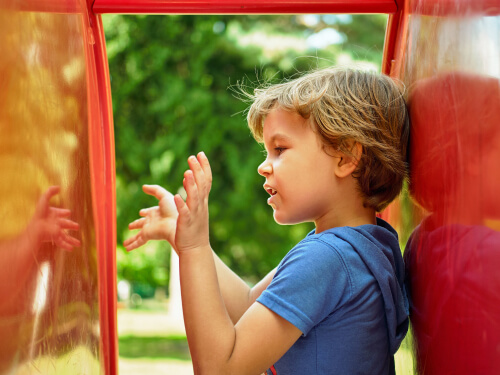
Table of contents
Why do children have imaginary friends?
Imaginary friends can be a point of contention for many parents. Should you be pleased that your child is indulging their innocent imagination or concerned about how ‘real’ they think their friend is?
The good news is that imaginary friends are completely normal for most children during their early years, and there are many reasons why children may enjoy spending time with a make-belief companion.
This can include:
- Expressing creativity – imaginary friends can come in many forms; animals, characters from stories or films, or even an imaginary version of children they already know and spend time with. The world of make-belief has no boundaries and children can let their imaginations run wild within the infinite worlds they can create for themselves.
- Testing the boundaries of social relationships – learning what is expected from them in different relationships can be difficult for children; it’s a whole new world with norms that they’re yet to make sense of. With a made-up friend, a child gets to be in control of the situation whilst also negotiating the social rules they’re getting to grips with.
- Companionship – even children with rich social circles can feel lonely sometimes. Whether it’s in the evening when they’re trying to get to sleep, or whilst engaging in some solo play time, there may be moments where children seek a companion and creating this for themselves fills that gap.
What are the benefits of children having make-believe friends?
Despite the phenomenon of imaginary friends being a concern for a lot of parents, there are actually many ways that they can benefit a child’s development.
For example by:
- Exploring relationships – having a companion that can’t respond allows children to play out different roles and learn about different dynamics within a relationship without any repercussions. Children with make-believe friends are thought to have better social skills as well as a greater perception of others’ emotions as they grow older compared to those who don’t.
- Supporting problem-solving skills – engaging with a friend that doesn’t exist in real life allows children to practice internalised thinking, acting from their own thoughts and reasoning rather than feeding off others. In the long term, it’s been suggested that this has a positive impact on cognitive ability and complex thinking.
- Practicing conversational skills – children can explore language in an informal way with a made-up friend, without having to negotiate a two-way conversation. They might practice how to say new words, for example, or put into practice different conversation techniques they’ve learned.
- Developing coping strategies – having a friend that they can retreat to when they’re feeling sad, angry or scared can help children to work through these emotions in a more productive way. Children often also relay their own emotions through their imaginary friend, giving parents a better insight into how their child is feeling and, in turn, allowing them to offer the support they need.
How old are children when they have invisible friends?
Although all children are different, the most common age for having an imaginary friend is between 3 and 6 years old. This is the stage of development when a child’s imagination is the least inhibited and they are beginning to learn about the world around them.
When do children stop having imaginary friends?
There isn’t really a hard and fast rule for when children should grow out of having imaginary friends. Typically, most will grow out of the practice as they progress through primary school, but it’s probably more common than you think for their companion to stick around a little longer.
Autism and imaginary friends
It’s been suggested that children who are on the autism spectrum are more likely to have an imaginary friend than neurotypical children. In fact, in a study carried out in 2023, almost half of the parents involved reported that their autistic children (aged 5-12) had an imaginary friend.
There are many reasons for why this may the case, including a greater desire to practice social skills and manage stress brought on by their neurodiversities.
Whatever the reason may be, research shows that autistic children with imaginary friends experience the same benefits as neurotypical children, including improved social skills and expressing creativity.
If you’re wondering whether your child may be autistic, our article exploring the signs that a child has autism might be useful.
Are imaginary friends something to worry about?
For the most part, imaginary friends are a natural part of childhood and are not a cause for concern. As we’ve highlighted, there are many benefits to children having imaginary friends, from improved social skills to being a wonderful creative outlet.
However, there are some situations where you might want to be a little cautious about your child’s make belief friend.
For example:
- If your child has suffered trauma – any child who has gone through a difficult situation, whatever it may be, is likely to look for coping mechanisms. Keep an eye on your child if an imaginary friend seems to be their tool of choice.
- If your child’s behaviour changes – any significant changes in behaviour are a sign that something isn’t quite right. If the imaginary friend seems to be the trigger for changes, this may be something to pay attention to.
- If the imaginary friend becomes scary to your child – for example, they may say their friend is being mean to them or calling them names.
- When children would regularly rather spend time with imaginary companions than real friends.
Bear in mind that the above examples don’t necessarily indicate that there is anything sinister going on, they may just suggest that the reasons behind an imaginary friend could be something to pay a little more attention to. If you are ever concerned about your child’s behaviours or relationship with an imaginary friend, please reach out to your GP.


